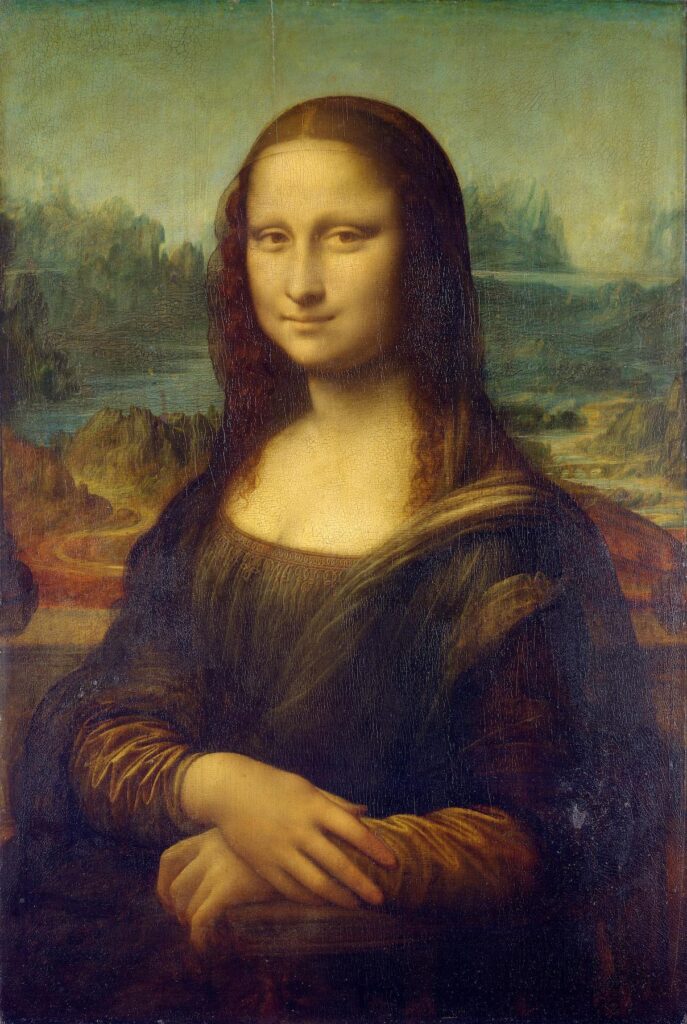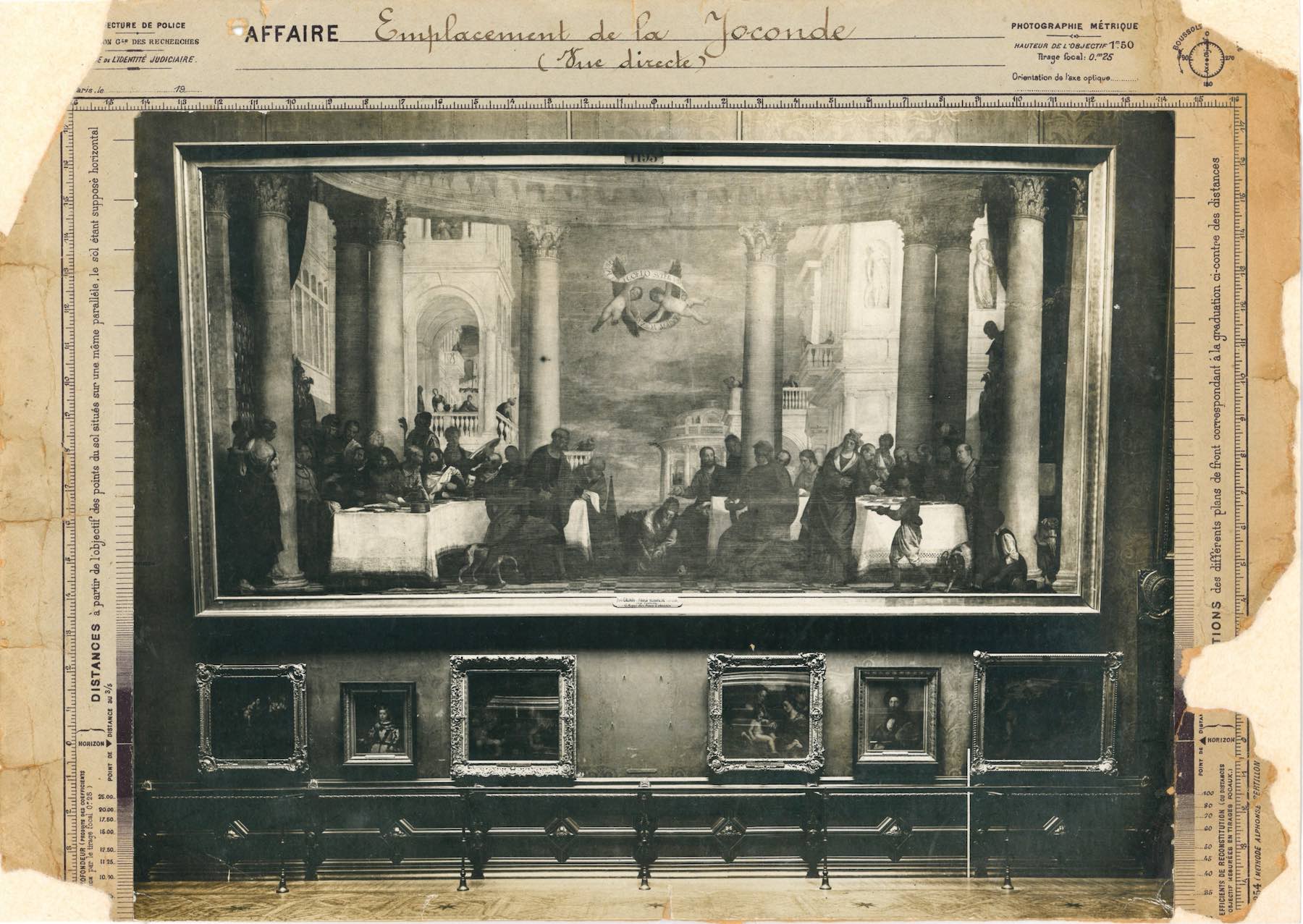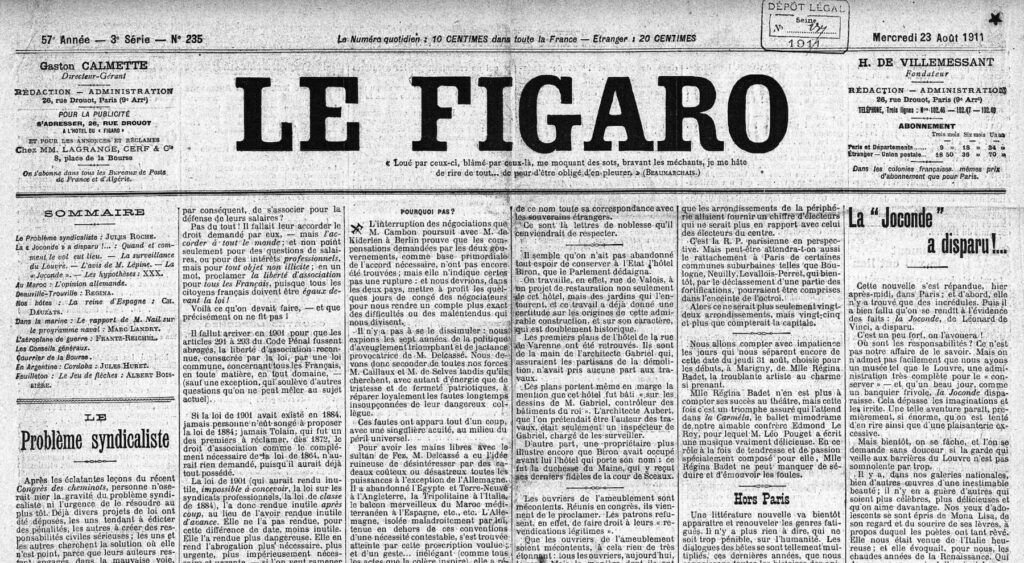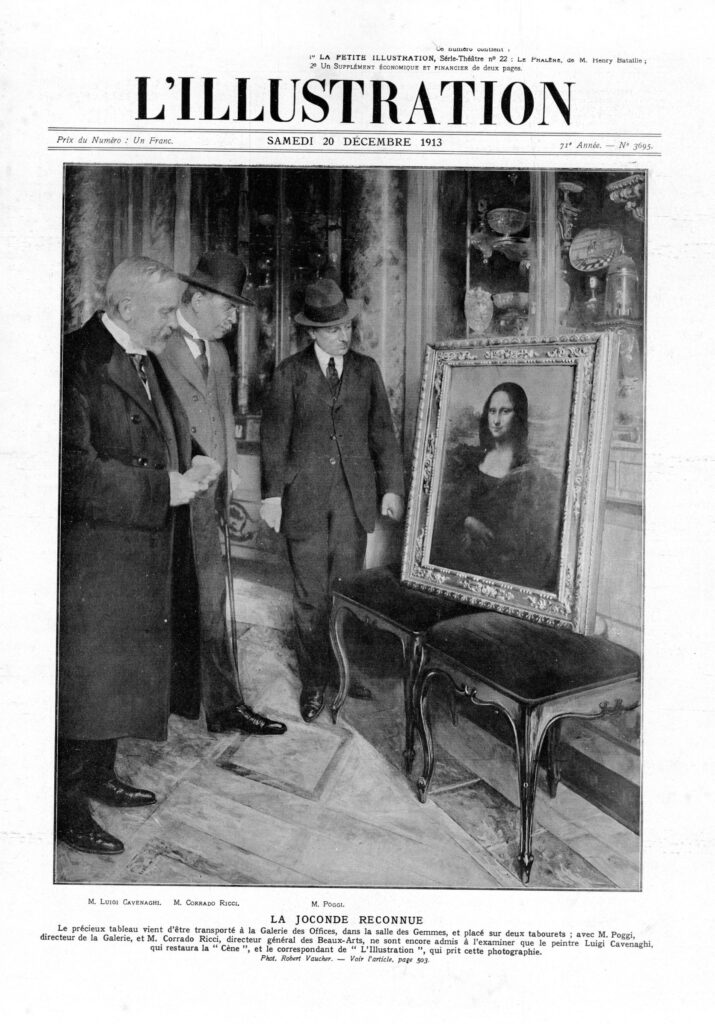The story of the Mona Lisa, the enigmatic lady painted by Leonardo da Vinci, is as rich and multifaceted as the expressions that dance across the face of the figure portrayed. This masterpiece, crafted by the Italian artist and now housed in the Louvre Museum in Paris, carries within its brushstrokes a tale that spans centuries, woven with intrigue, myths, and a journey worthy of a Renaissance epic. In this article, you will uncover the true story of the Mona Lisa.
Table of Contents
Leonardo da Vinci, the Italian Artist Who Painted the Mona Lisa
Leonardo da Vinci was not just an Italian painter. He was a scientist, an inventor, an engineer.
His life’s story is fascinating from the start, born in 1452 in the village of Vinci, in Tuscany.
To give you an idea: his father, Piero, a notary, was not married to Caterina, his mother. There’s even a book suggesting that Leonardo’s mother might have been a princess turned into a slave, a story so intriguing it became a book in itself.
This blend of distinct worlds in his lineage likely contributed to the unique perspective Leonardo brought to all his endeavors.
His childhood and upbringing, intertwined with the rich cultural tapestry of Renaissance Florence, shaped him into one of humanity’s greatest geniuses.
The complexity of his familial background is reflected in the diversity and depth of his work, spanning art, science, and technology.
The Story of the Mona Lisa: Did She Really Exist?
If you’re wondering who the Mona Lisa was, know that she indeed existed.

The story of the Mona Lisa begins with a commission by Francesco del Giocondo, a wealthy silk merchant from Florence. The city, in the early 16th century, was at the height of the Renaissance, a period marked by an unprecedented flourishing of the arts and sciences.
Francesco wanted a portrait of his wife, Lisa Gherardini, later known as Monna Lisa — a term combining ‘Monna’, a short form of ‘Madonna’, meaning ‘my lady’, and ‘Lisa’, her first name. In English, it’s usually written as Mona with one “n”, but in Italian, it’s with two “nn”. The painting is also known as “La Gioconda“, a nod to Francesco’s surname (del Giocondo).
Leonardo da Vinci began painting the Mona Lisa in 1503, and the completion of the work stretched over several years. Leonardo often multitasked, and reports suggest that the piece was effectively finished only in 1513 and was not delivered to Francesco del Giocondo, as the artist took it with him during his travels.
This project, like many others undertaken by Leonardo, was not just a commissioned work; it became an obsession with perfection, allowing him to explore new painting techniques and capture the essence of the human condition.
Read also: A Modern Rendering: Envisioning the Mona Lisa in Real Life
How the Mona Lisa Ended Up in France
The story of the Mona Lisa raises a significant issue for Italians and French alike: how did the Mona Lisa end up in France?
It was Leonardo da Vinci himself who brought the Mona Lisa to France. In 1516, he received an invitation from King Francis I of France to join his court. Thus, Leonardo moved to the Château de Clos Lucé (near Amboise, in the Loire Valley) with his pupils and works. This move marked a new chapter in Leonardo’s life and the beginning of the Mona Lisa’s story in France.
Many Italians believe that Napoleon Bonaparte stole the Mona Lisa during his Italian campaigns. However, this is not true because the work had been in France for centuries, legally acquired by Francis I, a patron of the arts and admirer of Leonardo.
It’s true that Napoleon looted many artworks and treasures from Italy, but he did not steal the Mona Lisa.
The Mona Lisa, having been acquired by Francis I, king of France, was taken to the Louvre in 1665, then to Versailles in the private gallery of Louis XIV. Later, after the French Revolution in 1797, it returned to the Louvre but remained relatively forgotten.
Finally, Napoleon, who was very fond of the painting, transferred it to his wife Josephine’s bedroom within the Tuileries Palace, to then display it again in the Louvre, following his coronation as emperor, between 1804-1805.
Where is the real Mona Lisa?
When it comes to viewing the original Mona Lisa, you can find this masterpiece in France. The iconic painting by Leonardo da Vinci is proudly displayed in the Louvre Museum in Paris. This world-renowned museum is home to a vast collection of art and historical artifacts, but the Mona Lisa remains one of its most celebrated attractions. Visitors from around the globe flock to the Louvre to witness the enigmatic smile and unparalleled artistry of the Mona Lisa, making it a must-see for any art enthusiast or traveler in Paris.
Planning a trip to Paris? Then reserve your ticket to the Louvre with Get Your Guide and see the Mona Lisa in person!
The Theft of the Mona Lisa
The story of the Mona Lisa in France would not be complete without mentioning its disappearance in 1911, an event that only served to increase its fame and mystique.
On the morning of August 22, 1911, the French painter Louis Béroud went to the Louvre, which was closed to the public as usual on Mondays, to carry out his work as a copyist. His goal was to depict the Mona Lisa. However, upon arriving at the location where the painting should have been, he found only an empty wall; the painting had disappeared.

This moment was detailed in an article by Le Figaro, published on August 23.

Initially, Sergeant Poupardin, alerted by Béroud, thought the Mona Lisa might have been taken to the Braun photography studio, a supplier to the Louvre authorized to transport works for photography outside of museum opening hours. However, the work was not in the studio, and it became clear that it had been stolen, leaving behind only the frame and glass, abandoned by the thief inside the Louvre itself.
The museum was evacuated, all its doors were closed, and staff were called in for initial interrogations. This was considered the first major art theft from a museum, a true “heist of the century“.
The French police began interrogating everyone who had been in the Louvre during some maintenance work, but without success. Initial suspicions fell on a group of workers seen near the Mona Lisa on Monday, but nothing was proven.
Apollinaire and Picasso were also suspected (with the former even being arrested) for expressing a desire to empty the museums to fill them with their own works, but it was just big talk among artists.
The French authorities even suspected a German plot, aiming not only to take their colonies in Africa but now also to steal their artistic treasures. The press extensively covered the case, and the Louvre was without its Mona Lisa for two years, until it reappeared in Florence in 1913.
The turnaround in the case was detailed later by Cronaca delle Belle Arti.
On November 24, a Florentine antique dealer named Alfredo Geri received a letter signed by “Leonardo V.”, offering to sell him the Mona Lisa. The letter’s author expressed a wish for the work to return to its homeland, especially Florence, the birthplace of the portrayed figure, and to be displayed in the Uffizi Gallery in a place of honor. The letter proposed a form of revenge against the first French empire, which had looted many artworks from Italy.
Geri notified the director of the Uffizi, Giovanni Poggi, and together they arranged a meeting with “Leonardo V.” on December 11, 1913, at Geri’s shop. They then went to the hotel where the mysterious character was staying and where he had hidden the painting. The person who appeared was Vincenzo Peruggia, an Italian painter who, unaware of the painting’s collection history, had the idea of returning to Italy what he thought had been stolen by Napoleon.

After confirming that the work was indeed the real Mona Lisa, authorities were notified, and Peruggia was arrested. During his interrogation, he explained that he had worked at the Louvre and was familiar with the security system. He hid in the museum overnight, removed the painting from its display, wrapped it in his coat, and left unnoticed, even taking a taxi back to his lodging, where he hid the painting under the bed for 28 months.
The trial took place in June 1914 in Florence, and Peruggia was sentenced to one and a half years in prison, receiving a mitigating factor of mental insanity. His naivety generated public sympathy, leading to calls for a more lenient sentence for him.
Did you find the story of the Mona Lisa interesting? Have you had the privilege of seeing the work live? If you enjoyed the article, share it!
If you enjoyed this article, you can support my work with a coffee here ☕
Another way to support Tuscany.Tips is by booking with one of our trusted partners below — at no extra cost to you.
FIND YOUR NEXT STAY
Book your stay in Italy or anywhere in the world with our partner Booking.com!
You'll find the best deals and support our website. Thank you!
BOOK TRANSFERS AND TOURS ONLINE
Book transfers, tours, and excursions in Italy and around the world with our partner Get Your Guide.
NEED DATA IN ITALY?
Get 5% off your Holafly eSIM with code TIPS—fast, easy, and reliable!





